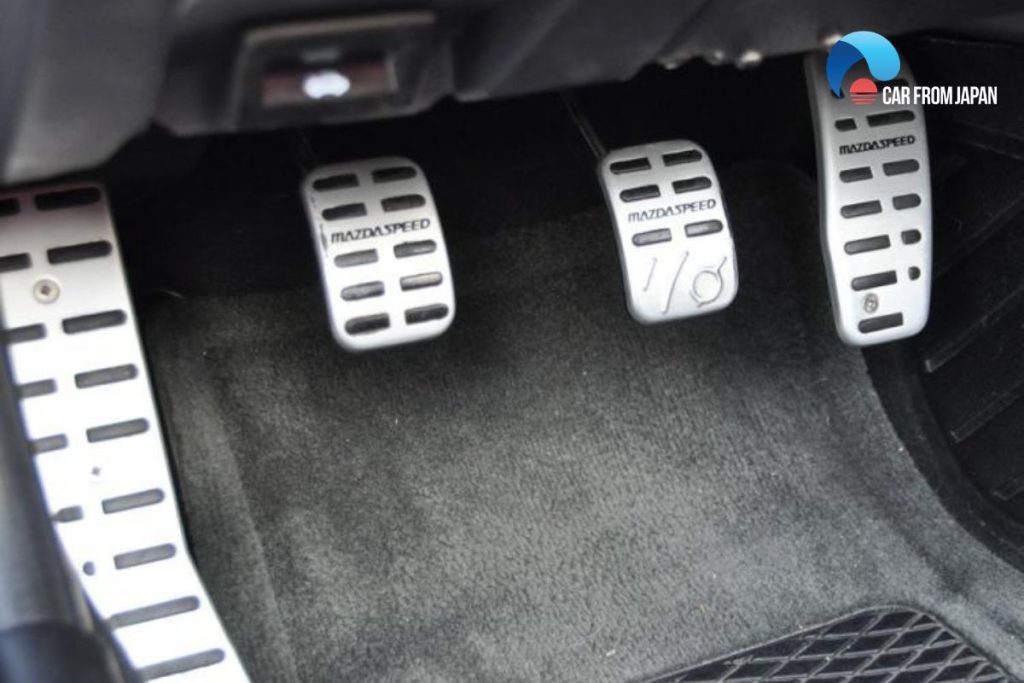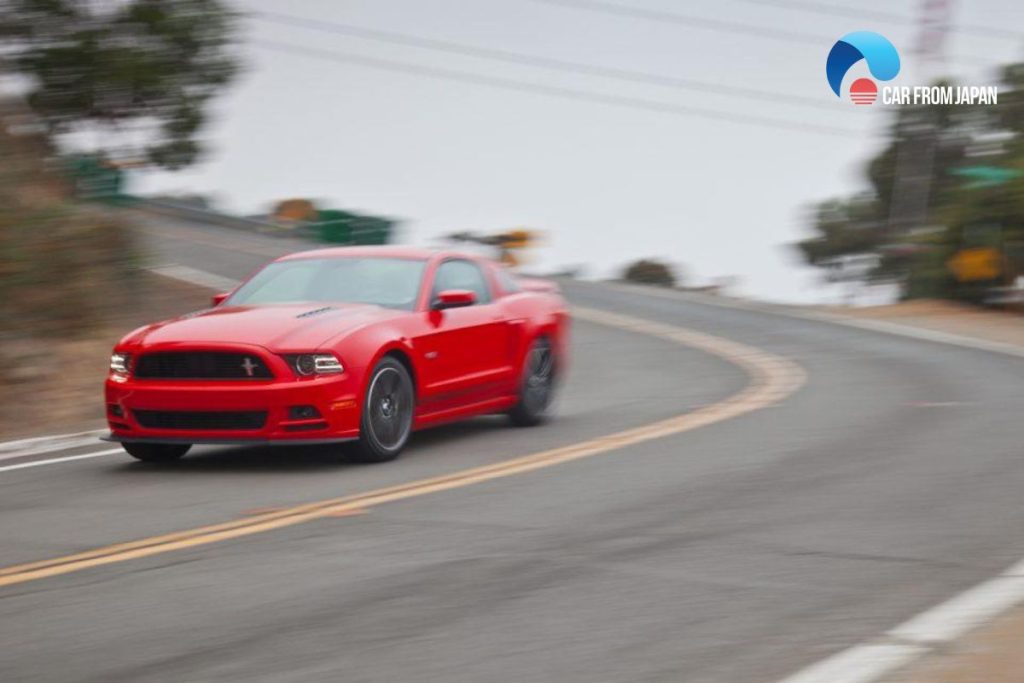Driving a car with a manual gearbox is not as easy as its automatic counterpart. You have to learn the art of driving a stick shift thoroughly before hitting the road.
Given that, one of the skills that you need to master is to know how to brake in manual car.
Most learners stay confused because manual cars have three pedals for braking. It is somewhat difficult and needs lots of practice to learn the right use of brake, clutch, and accelerator.
Contents
How To Brake In Manual Car?
The clutch pedal is the component that makes braking in a manual car more difficult than an automatic. The brake pedal does the job of losing speed and the accelerator does the opposite.
The clutch, on the other hand, disconnects the engine from the wheels. You have to know which pedal to press after which in different driving scenarios to learn how to brake in manual car.

1#Slowing Down to a Normal Stop From a High Speed
Driving a car at 70 mph or more means that it is in top gear. You cannot stop the engine in the same gear until it slows down, dropping the speed to under 40kmph.
What you need to do is to apply the brake without a clutch until the speed drops. Then shift the transmission to the fourth gear and release the clutch.
Keep pressing the brake until the auto reaches a low speed (say 20kmph) and then apply the clutch to stop the vehicle completely.
If you are driving at a low speed, just press the brake pedal until the vehicle reaches 25 or 20kmph, and then apply the clutch to stop it.
2#Emergency Stop
The most important rule for emergency or panic braking is not to touch the clutch. You have to use the optimum engine braking despite taking the risk of stalling the engine. Don’t lower the gear even if you are driving at a very high speed.
See More: Avoid these Driving Habits If You Don’t Want to Destroy Your Manual Car!
3#Stopping in a Rally Circuit
You have to apply the brake first when trying to stop the car on a track. Engage the clutch and downshift gears when the vehicle is close to the in-gear idle. After finishing the shifting, re-engage the clutch.
4#Pulling Over at the Traffic Light
Most drivers prefer saving fuel to engine braking in that case. So, you can press the clutch and brake pedals at the same time. If the car has a deceleration fuel cutoff (DFCO) technology, there is no need to use the clutch.

5#When Driving Downhill
Novice learners remain confused about how to brake with a manual car when going downhill because there are so many theories.
Well, the simplest way to do it is to shift the gear to one level higher than what you used at the time of going uphill. Then, press the brake pedal without touching the clutch.
Common Problems When Breaking A Manual Car
It might be challenging to keep in mind all the steps required to stop your car when you first learn to drive a manual gearbox. Beginners frequently make a number of errors.
Not depressing the clutch pedal
Slowing down without using the clutch causes the engine to hesitate and stall.
Forget to release the clutch pedal
If you’re in neutral, the clutch is already disengaged, and pressing on the pedal causes unnecessary wear.
You don’t gain the braking advantage of a lower gear until you let off of the clutch pedal after shifting from a higher to a lower gear.
The clutch pedal is not entirely released
The pedal should be either completely depressed or not touched at all. “Riding the clutch” refers to partially pushing the pedal and producing unnecessary wear.
When shifting, do not use the clutch pedal
Pushing the driving stick without clutching is usually possible, but it’s harsh on the clutch and can even lead to gearbox maintenance.
Becoming distracted
With a manual transmission, there is more to consider. You’re shifting your gaze and maybe your hand from the steering wheel to the manual transmission. You must pay attention to what is going on around you on the road.
That is why it is critical to practice until stick shift braking no longer requires your whole focus and becomes as natural and comfortable as stopping an automatic.
FAQs about Braking Techniques in Manual Car
Is heel-and-toe braking necessary in a manual car?
Heel-and-toe downshifting is a more advanced technique.
While it can be beneficial for performance driving, it’s not necessary for everyday driving. Simply downshifting smoothly is usually sufficient.
How can I prevent brake fade in a manual car?
Brake fade occurs when the brakes overheat and lose their effectiveness.
To prevent this, avoid riding the brakes and use engine braking when appropriate. Additionally, make sure your brakes are properly maintained.
Should I use the handbrake (parking brake) when stopping on a hill in a manual car?
Yes, it’s a good practice to use the handbrake when stopped on a hill to prevent rolling backward.
Engage the handbrake before releasing the foot brake, and then smoothly release the clutch and accelerator when starting on a hill.
What should I do if my brakes feel spongy or unresponsive?
If your brakes feel spongy or unresponsive, it’s a sign of a potential issue.
You should have your brake system inspected by a qualified mechanic to ensure your safety on the road.
Can engine braking alone slow down a manual car effectively?
Engine braking can slow down a manual car, but it may not be sufficient for rapid deceleration.
It’s best used in combination with regular braking for effective stopping.
Final Words
Remember not to use the clutch before braking in any driving situation to master how to brake in manual car.
You should engage the clutch pedal only when shifting gears and the car is close to a dead stop.
Otherwise, avoiding the clutch will help with having better control over the wheels, allowing using the engine resistance for braking, and saving fuel.




Many people recommend keeping the clutch engaged when emergency braking. I’m pretty sure this is bad advice.
The discussion is about whether you should disengage the clutch when braking on a vehicle with ABS when emergency braking. i.e. Trying to stop the vehicle in the shortest achievable distance.
There are two factors that need to be considered in an emergency braking situation but primarily it is whether the wheels provide the maximum friction forces.
1. ABS or not ABS. One of the most important factors is how much friction you can apply with your wheels. ABS braking is arguably close to the most efficient since it results in the use of static friction most of the time. Without ABS brakes, we have a problem that the brakes will lock the wheel. A valid argument in the case of no ABS is that the engine will cause the wheel to turn meaning that means a better friction coefficient may be obtained again only in the case of no ABS.
2. How quickly does the engine stop on it’s own. If the response of the engine is that it takes E seconds to slow to idle, with no throttle then this can be assumed the no load stopping capacity of the engine. If this period of time (E seconds) is longer than using brakes alone (B seconds), then the engine provides a net negative stopping effect. Again, the stopping with the engine effect may be useful in cases where we don’t have ABS because it causes the wheels to increase the friction coefficient but with ABS it is a net negative because the brakes are already providing an almost ideal friction coefficient and the brakes are additionally loaded with slowing down the engine.
I ran 3 tests (6 runs) on a dirt road near Uluru a few years ago. They alternated between clutch disengaged and clutch engaged and stopping from 40 km/h with the ABS on and maximal braking pressure. The results were that the stopping distances for clutch engaged were consistently longer than clutch disengaged (~5m if I recall correctly). Each subsequent test caused the braking distance to be longer, I assume due to the brake temperature but the longest clutch disengaged distance was shorter than the shortest clutch engaged distance. The surface was powdery so the friction coefficient was small and the stopping times were relatively longer than a sealed road. According to my theory, this would have been an ideal case for engine braking since the time difference between E and B should be the smallest case in practice.
The physics is quite simple, the friction of the wheels on the road is what causes the car to stop. If you can achieve the maximum friction then that will cause the car to stop in the fastest time. If the braking system is able to lock the wheels then the braking system alone is able to provide the maximum braking force at some instant in time but once the wheels are locked, the friction coefficient decreases markedly and this issue can be addressed by engine braking where there is a mechanical connection to the rotational inertia of the drive train and engine that causes the wheels to turn and hence attain a better friction coefficient. ABS is a near optimal solution to the dynamic friction coefficient issue and to the extent that ABS achieves the maximum friction coefficient it requires no other assistance and the extra load of having to consume the drive train and engine rotational energy will cause the brakes to have less stopping performance.
In reality the system is even more complex and there are many second order effects, for example where oscillations between wheel and brake and drive train can cause noticeable deviations but these are much harder to predict and my hypothesis is these are second order effects and probably don’t alter results significantly.